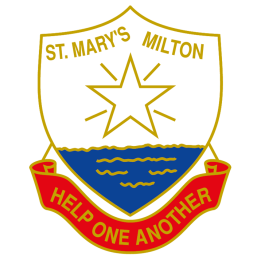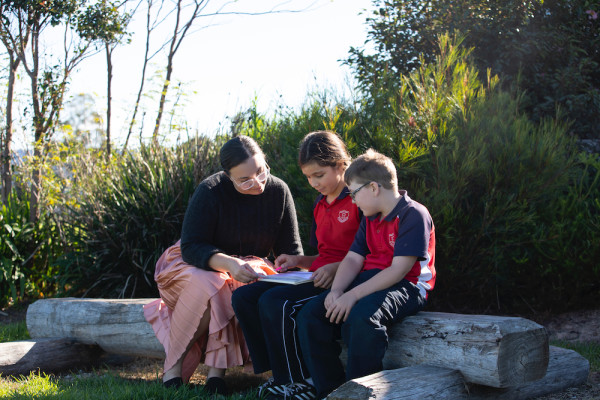
St Mary's
Star of the Sea
Milton
Star of the Sea
Milton
A Catholic Parish Primary School
 St Mary Star of the Sea Catholic Primary School is a learning community where each child is valued and encouraged to reach their full potential. Learning is viewed as a lifelong process and is seen as the core business of the school.
St Mary Star of the Sea Catholic Primary School is a learning community where each child is valued and encouraged to reach their full potential. Learning is viewed as a lifelong process and is seen as the core business of the school.
Our school is registered by the NSW Education Standards Authority (NESA) and is subject to its curriculum requirements. NESA sets and monitors quality teaching, learning, assessment and school standards. It is also responsible for developing Kindergarten to Year 12 syllabuses for NSW schools.
Requirements include an educational program based on, and taught in accordance with, the outcomes of NESA syllabuses in the six Key Learning Areas (KLAs) of English, Mathematics, Science & Technology, Human Society and its Environment (HSIE), Creative Arts, and Personal Development, Health and Physical Education (PDHPE).
In addition at St Mary's, a course in Religious Education is taught in theory and practice.
At St Mary’s Star of the Sea, we endeavour to deliver contemporary, quality learning opportunities in English and provide a rich language environment where children are encouraged to listen, talk, read and write every day.
We believe that the study of English is integral to the learning and development of all students. It helps create confident communicators, imaginative thinkers and informed citizens. It is through the study of English that our students learn to analyse, understand, communicate and build relationships with others and with the world around them to become informed, active participants in Australian society. Students learn about the power, value and art of the English language through the use of rich texts.
St Mary’s uses the NSW Syllabus for teaching English. The English curriculum is designed to provide opportunities for students to both respond to and compose a wide range of print, spoken, visual, media, multimedia and digital texts.
We work in partnership with families to support our students’ literacy learning. We know that when parents reinforce the efforts of schools, children’s literacy competence, attitudes and confidence improve.
The aim of the Mathematics curriculum is to develop students’ mathematical thinking, questioning understanding, competence and confidence in the application of mathematics.
The Mathematics curriculum is divided into 6 strands. Working Mathematically processes assist students to develop problem-solving strategies, including questioning, communicating, reasoning and reflecting.
The five broad strands of Mathematics are
Science and Technology develops student’s skills in thinking, investigating and problem solving. It gives them knowledge and skills in scientific investigation, design and applied technology. This subject builds on the curiosity children have about their natural and built environments.
In Human Society and Its Environment (HSIE), students learn about history, geography, civics and citizenship. They investigate their personal community identity, and gain an understanding of their nation and its place in the world. They learn to participate effectively in maintaining and improving the quality of their society.
Creative Arts gives students experiences in visual arts, music, drama and dance. They have opportunities to explore their creativity in each of these areas. They learn to appreciate the meaning and values that each art form offers. They perform and express themselves through visual arts, music, drama and dance.
Personal Development, Health and Physical Education (PDHPE) develops the knowledge, skills and attitudes students need to lead healthy, active and fulfilling lives. Students learn about the importance of good food and regular exercise. They learn how bodies grow and change over time. They learn skills to play individual and team sports, and values of sportsmanship and teamwork.
Each KLA includes syllabuses that are inclusive of the learning needs of all students.
Syllabuses identify:
The primary (K-6) curriculum is organised into four Stages of learning:
|
Early Stage 1 |
Kindergarten |
|
Stage 1 |
Year 1 and Year 2 |
|
Stage 2 |
Year 3 and Year 4 |
|
Stage 3 |
Year 5 and Year 6 |
Most students will be working towards the outcomes for their Stage. Some students will be working towards outcomes that are above or below their Stage.
For more information on the NSW curriculum, visit the NESA website.
Did You Know: St Mary's Star of the Sea is committed to working in partnership with families and community in welcoming Aboriginal and Torres Strait Islander students – supporting them to reach their full potential and to embrace their culture and identity. Read more here